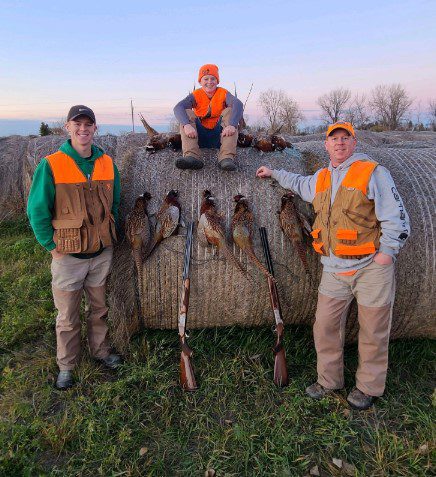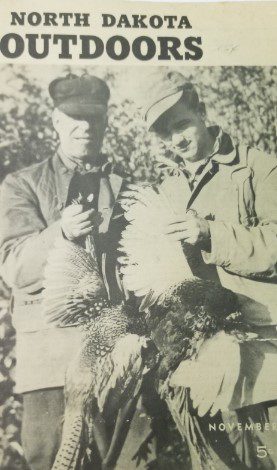

A big and colorful bird bursts from heavy cover, startling even the most seasoned hunter. It’s the moment that every pheasant hunter hopes for, but then is really never quite prepared.
With a leap into the air and a rapid beat of its wings, the rooster pheasant sometimes emits a familiar cackle, telling the hunter that the quickly moving bird is indeed what he or she has been searching for. Yet, despite the loud and unforgettable announcement, the hunter’s response is often far less than what has been practiced at the shooting range.
Roosters can do that. Sometimes several times a day. Some are taken by wing shooters. Some are not. It’s all part of what makes pheasant hunting, virtually every pheasant hunt, a memorable one. Toss in the friendly teasing of fellow hunters, family and friends, and you have experienced some of the greatest possible moments in the field.
Reed Argent, Minot, is an avid outdoorsman, but is also necessarily busy with children involved in a variety of activities. That has meant putting a few endeavors on hold, but not pheasant hunting.
"Pheasant hunting is really about spending time with family and friends,"Reed Argent, Minot
“Pheasant hunting is really about spending time with family and friends,” said Argent. “It’s about being in the outdoors. When I was younger it was about shooting limits. Now it’s about kids getting their opportunities to shoot and seeing the looks on their faces.”
The looks he sees undoubtedly remind him of his own special moments in the field, his first pheasant hunts and all the thrills he experienced as a young hunter. Argent says his schedule allows for five to six weekends of pheasant hunting a season, usually with sons Parker, 11, and Gavin, a freshman at the University of Mary in Bismarck, and daughter Paige who is a student at the University of North Dakota in Grand Forks.
This year reports from the field indicate a mixed year for pheasants, but overall, there is still opportunity for those who get into the field.
"Maybe not as many as last year, but still, plenty of birds."Argent
“The first weekend of the season there was a lot of fields not harvested,” said Argent. “Now the crops are pretty much off and the birds are in more traditional cover areas. Maybe not as many as last year, but still, plenty of birds.”
How many upland game birds, pheasants included, are in the state today is anyone’s guess, but it wasn’t always that way. The estimated population of upland game birds in North Dakota in 1940 was an astounding number. In a story on brood stock carrying over into winter, here’s what the November 1940 issue of North Dakota Outdoors reported:
“Pittman-Robertson research workers reported the upland bird population at 8,300,000 at the start of the season, and with a ten percent kill, it would leave 7,470,000 birds.”

Incidentally, the closing date of the state’s upland game hunting season in 1940 was October 21. This year’s pheasant season opened Oct. 9, quite a difference.
Hungarian pheasants were included in the 8-million plus estimate. Like ring-necked pheasants, those sporty birds are not native to North Dakota, having been introduced in 1923 when approximately 100 pairs of them were purchased from Czechoslovakia. The limit on Huns, or gray partridge, today is three. In 1940 the limit was five and, according to North Dakota Outdoors from that year, the birds were flourishing in the state and had begun expanding their range into neighboring South Dakota.
The November 1940 issue of the Outdoors also commented on hunter reaction to the five bird limit:
“They could set the bag limit on Hungarians at 25 birds per day, and that bird would be able to take care of itself.”
Hunter Education classes, now a requirement for all new hunters in the state, did not exist in 1940. That year, apparently, as the early day North Dakota Outdoors noted, was a bad one for firearms incidents in the field:
“The season was marred somewhat because of the many fatal accidents, which in most cases, can be attributed to mere carelessness. Hunters cannot be too cautious with firearms, and no matter how much publicity is given to this matter, someone always disregards the rules of safety.”
